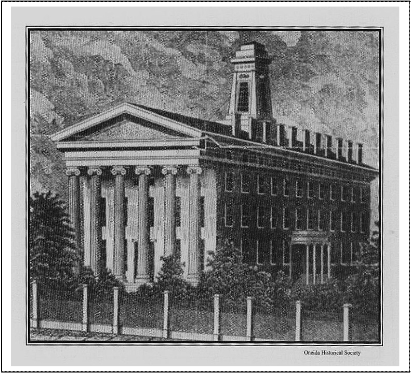Education in the 19th Century
AMHERST ACADEMY
Hattie Sheldon’s paternal ancestors arrived in Massachusetts from England in the mid-17th century as part of the Puritan movement. Interested in education, the Puritans passed education laws which led to the collection of money for an academy in Amherst, MA that was completed in 1814. Both girls and boys could enroll. The most famous student known to have attended Amherst Academy was Emily Dickinson from 1840 to 1847. Only one small mention of Hattie’s schooling at Amherst Academy exists. It was included in an old newspaper article written after her death by a family friend from Massachusetts. When Hattie left New York for Massachusetts, her father’s many relatives still lived in Massachusetts, particularly around his old hometown of Bernardston.
 Amherst Academy, Amherst, MA
Amherst Academy, Amherst, MA
Image: Jones Library Special Collections
Amherst Academy: http://www.digitalamherst.org/exhibits/show/teaching/amherstacademy
UTICA FEMALE ACADEMY
By 1827, boys and young men in Utica, NY had several good schools from which to choose. That was not the case for girls. At the urging of many parents who wanted their daughters educated, makeshift classes began in 1837 at the United States Hotel. Donations poured in and funded an impressive multi-story Greek Revival building that opened in 1838. Five departments of study were offered to young women. By 1854, the academic year included two terms of 22 weeks each with an 8 week vacation at the end of the second term. Each young lady who boarded at the school furnished her own towels and table napkins. Other charges included fees for washing, lights and pew rent at 75 cents per quarter. This information was provided by the Oneida County Historical Society in Utica, NY.
After graduating from Amherst Academy, Hattie returned home and attended Utica Female Academy. The academic requirements were rigorous and required skill and attention. For the rest of her life, Hattie was known for her unusual capabilities as a teacher.
This first Utica Female Academy building was completed in 1838.
Photo: Oneida County Historical Society, Utica, NY
Utica Female Academy: http://www.education.com/study-help/article/us-history-religion-reform-women-rights/
